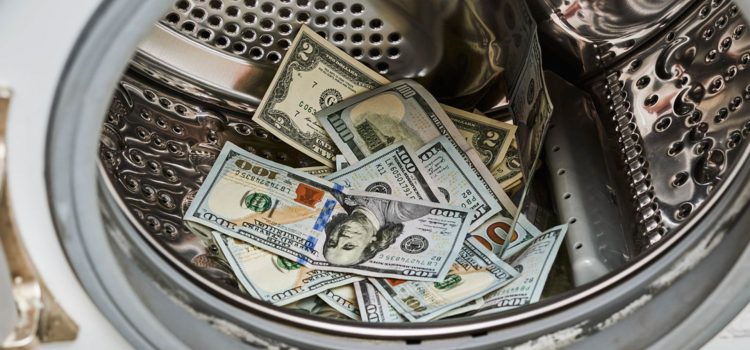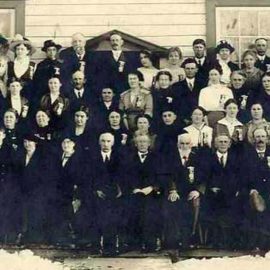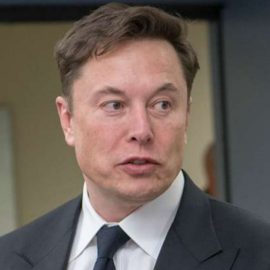
How does Stratton Oakmont rank as one of the most famous money laundering cases? How did Jordan Belfort launder money?
Jordan Belfort’s money laundering scheme at Stratton Oakmont is infamous. To pull it off, Belfort used a Swiss bank account, took advantage of family members, created a fictitious corporation, and more.
Here’s how Belfort used Stratton Oakmont to launder money.
Money Laundering at Stratton Oakmont
Jordan Belfort’s money laundering scheme started when he traveled to Switzerland in secret, but once he was there, the bankers he met spoke openly about how the Swiss banking system conceals huge sums of money and how it’s their policy to not cooperate with foreign institutions, such as the US’s SEC. Because the practice of issuing “numbered” bank accounts with no name attached stopped after World War II, Belfort’s first step was to open accounts in the names of proxies, much like those who held his stock. These people would have the unenviable task of smuggling large amounts of cash across the border, so Belfort had to use people he could trust who were also unlikely to arouse suspicion—including his elderly British aunt and one of his drug dealers’ Swiss extended family. This would soon turn Stratton Oakmont into one of the most famous money laundering cases in financial history.
(Shortform note: Even before Belfort’s money laundering scheme, the Swiss banking system’s penchant for hiding money had become public knowledge thanks to the scandals involving Philippine president Ferdinand Marcos, who embezzled vast sums of his nation’s wealth and hid it in various Swiss bank accounts. In spite of promises by the Swiss government to curb its banking system’s illicit practices, a report published in 2022 revealed that Swiss banks still hold billions of dollars in accounts owned by criminals and corrupt political regimes. While the Swiss attempt to crack down further on the lack of transparency in their banking system, the mechanism by which money is laundered remains essentially the same as in Belfort’s day.)
To access and control his overseas funds, Belfort writes that his bankers introduced him to a specialist in creating fictitious corporations. This person would generate “bearer companies” that wouldn’t have Belfort’s name on them at all—ownership would be established through physical stock certificates that Belfort would possess. This person would act as Belfort’s corporate proxy, falsifying documents to make his companies look real and conducting business on Belfort’s behalf. For anything Belfort wanted to do—for example, transferring funds from business A to B—this specialist would concoct a paper trail to make the transfer seem justified.
(Shortform note: Other financial criminals have shown that it isn’t necessary to use fake corporations to funnel illicit wealth—if you’re brazen enough, real corporations and corrupt governments can serve the same basic function. In Billion Dollar Whale, Tom Wright and Bradley Hope describe how Malaysian financier Jho Low manipulated his political contacts to gain control of Malaysia’s sovereign wealth fund, which he used in conjunction with a Saudi oil company to siphon wealth into his private accounts. As with Belfort, many banks turned a blind eye to Low’s dealings since they also stood to profit from his transactions, but unlike Belfort, Low’s schemes revolved around real corporations and government money.)
Belfort lists two ways these fake corporations let him move money back to the US. One was by using a US legal loophole called Regulation S, which exempted overseas companies from certain restrictions on US investors. By going through his Swiss businesses, Belfort could invest in the US stock market in ways that he couldn’t as a US citizen. The other way of moving his money back home was through a practice called “transfer pricing,” in which one of his overseas companies would overpay a US business he owned for services or merchandise that may not even exist except on paper. By creating fake companies all over the world, Belfort could move money anywhere under the guise of seemingly mundane business dealings.
| Gray Areas in International Finance The two mechanisms Belfort used to shift money both have legitimate financial applications. The Regulation S rule that Belfort exploited was originally intended to facilitate international investments, though bad actors in the US financial market immediately began to make use of its loopholes. The SEC tightened its regulations in 1998 to prevent people like Belfort from masquerading as foreign entities to make illegal investments in the US stock market. The other tactic, “transfer pricing,” also has legitimate uses. Many multinational corporations exist as separate legal entities in each country in which they operate. To move assets from one country into another—for example, when a German brewery ships bottles of beer to its US warehouse—it has to set a fair transfer price for its German office to sell its inventory to its separate US counterpart. People like Belfort abuse this system by setting unfair prices that shift wealth from one business to another, sometimes as a means for laundering money and sometimes as a way to avoid taxation by shifting profits to countries with lower tax rates. |






